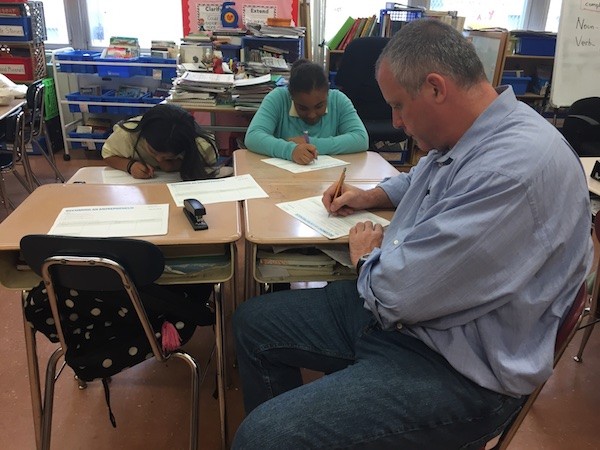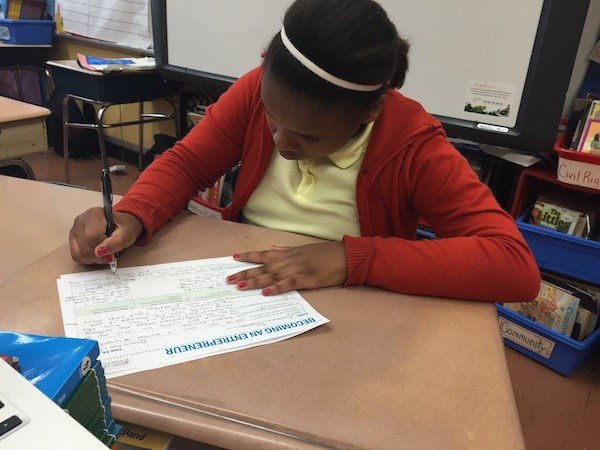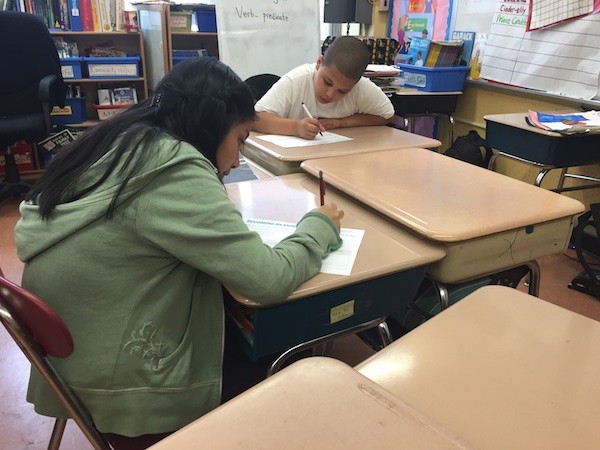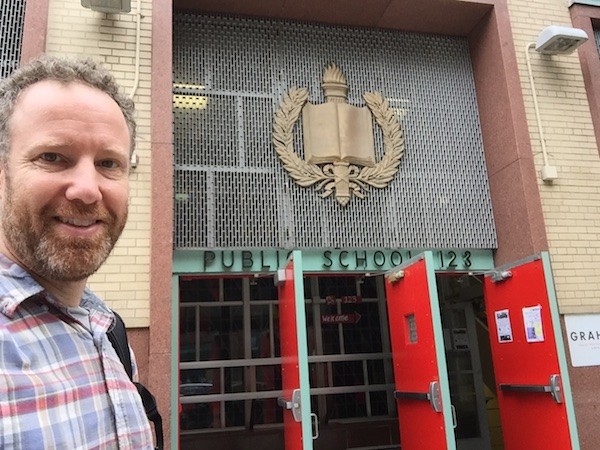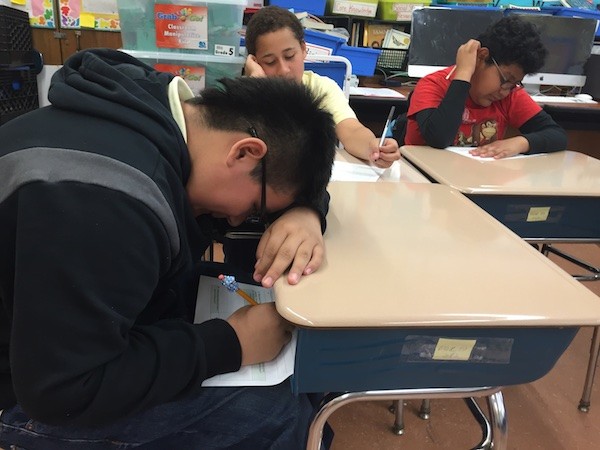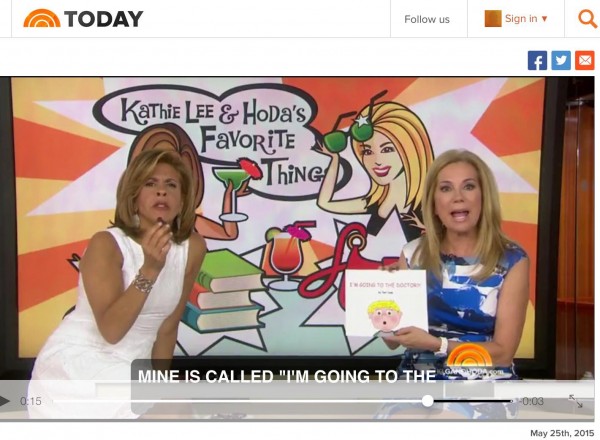If you are an author or creator hoping to grow and engage your audience — outside of your book itself — I want to introduce you to someone I’m a big fan of: Ze Frank.
Ze (pronounced “zay”) is a “performance artist” who created one of my favorite things ever, and is perhaps best known for his initial “viral” videos How to Dance Properly, circa 2001.
Well now, Ze is president of Buzzfeed Motion Pictures, which means that he is one of the people in charge of all the videos created by BuzzFeed. I recently watched this A-MAZ-ING interview with him (interviewed by Dawn Chmiewlewski) where he discusses how the social web has radically re-shifted what it means to engage an audience.
Why should this be interesting to you? Well, a few reasons which I will outline below. The premise is this: If you are an author or other creative professional who wants to develop an audience, how do you go about it?
Okay, let’s dig in.
Content is a Collaboration
Content is a relationship between the creator and individuals who experience it. Now, before I discuss how content has changed due to the web, it is worth noting that content is ALWAYS a collaboration.
If you write a book, the way an individual interprets those words and infuses it with their own life experience, worldview, mood, needs, and fears changes what you intended. The result is a collaboration, one where you set an intention, but it becomes infused within the life of another who inherently modifies it.
You rarely see this; it exists inside someone’s brain. Even a group of 10 people who all say they loved the same book will have each had a unique experience with it.
Today, due to the way individuals now drive how content is shared, we are getting a glimpse into what had previously been a hidden process.
In the interview with Ze Frank, I got the sense that the interviewer kept trying to get Ze to break down the steps of creating content that will yield success in terms of spreading to an audience. He keeps demurring:
“Content exists inside of a massive ecosystem. Content has a different usage — we use it in different ways. The one that has dominated the story of media has been consumption. We have it, we consume it, it makes us feel good. It overwhelms us, we give ourselves over to it. Think about going into a movie theater, and how transformative that can be.”
“[Nowadays] you have immediate feedback mechanisms. What we [at BuzzFeed] think about a lot is, ‘what assumptions can we make?’ One way is to look at the statements people make when they share a piece of media. When you share a piece of media, you have written something to justify why. That to me is a very interesting piece of data.”
“You start seeing some patterns to emerge, one that is particularly interesting is the notion of identity. The statement would be, ‘OMG, this is totally me.’ Or ‘Wow, I never thought anyone experienced this except me.'”
“You can then literally start mapping out [different types of identity] and start testing them. See if you are right. That is the gift of this age — you can do this very quickly. The best approach is that you use data and gut in a fluid way.”
“The reality of it is that the content itself takes on life and moves without you [the creator].”
“Shares are much more interesting than views. Views you can buy, it’s something you can game. But shares, because it is initiated by a person, and they are putting their own reputation on the line by sharing it — its not an easy thing to game.”
I love how honest Ze is about the idea of “gaming” content reach by purchasing it. This is how media spread for decades… how newspapers, magazines, TV, and radio would expand their reach by gobbling up new markets. They bought the markets, used that growth to justify success, and therefore, more ad dollars. They were “gaming” to dominate markets by spending money.
But today, when the audience gets to choose what it sees and what it shares, the same tactics don’t always work. What Ze describes at BuzzFeed is an organization of creators who are embracing these changes as much as they can. Is it the only way? Of course not — there are many other organizations (and individuals) who create and share content differently.
If you are an author, one thing to consider is, how do you not sell more books, but how do you encourage greater collaboration with others? Because when you talk about ‘word-of-mouth marketing’ or ‘going viral,’ that is exactly what is required.
No One Knows What Will Spread; Finding it is a Process
When Ze describes the process of how his team at BuzzFeed is organized and how they create videos, it is clear that he runs a laboratory where experimenting is encouraged.
I had heard that BuzzFeed will create many headlines for each article or video, and test to see which gets shared the most. The organization is known for the data they gather around how content becomes popular, but as indicated above, Ze is a big proponent of marrying this data with your gut feeling as a creator.
For Ze’s initial viral video, How to Dance Properly, he sent a birthday invitation to 17 people via email in 2001. Within a week, 20 million people saw it, all via email forwards.
As the interviewer tries to break down why that worked, this interaction takes place:
Ze: “I think you asked the question with the intention that the content held the key for why it did well, and I would challenge that. It’s a fool’s errand.”
Interviewer: “You are in the ‘Content is King’ place [the interview is taking place in The Paley Center], where people think that great content drives audience. So, we’re wrong?”
Ze: “Yes. It’s not the full picture. The notion of ‘good content DRIVES audience,’ the notion of ‘drive’ and what that means is the interesting part of that statement. That has been the challenge of the past 10-15 years, coming to terms with the fact that a lot of the assumptions that we had as an industry around what “quality” is and “good” is, has come into opposition with the stark reality of social distribution. The things we thought were great are not performing well, when the audience gets to choose how it spreads.”
He talked about how “6 Fruits You Are Eating Wrong” was a MASSIVE hit — an order of magnitude higher than other stuff. And even now, he has no idea why.
“I don’t think about the form of the content, I think about the process by which it is made.”
For authors and other creative professionals trying to develop an audience for your work, this is a critical point. You may have some creative ideas that you are proud of, which is awesome. TEST them to see if others will be engaged with them or not. Perhaps this does not apply to your books or other works for art that you create for individual creative expression and growth. I am a huge fan of creating art for the sake of art.
But for the 1,000 other things you do to try to develop an audience for your work — articles, events, interviews, blogs, newsletters, social media — don’t assume you know what will work. Experiment and allow others to help you learn what does and doesn’t work to engage them.
Ze puts it this way:
“The idea of someone saying ‘Well this is going to go viral’ doesn’t work. It’s really a process.”
Content Spreads Differently Online Than You Think
BuzzFeed.com has never done banner ads. They like branded content, where a brand partners on content. So a company will commission BuzzFeed to create content, and the end user knows that it is branded. The vision here is to satisfy goals of the brand, and is something that people want to share. An example is the “Dear Kitten” series created with BuzzFeed and Purina. (I refuse to link to it because I know you will not finish this article, getting lost in a series of kitten videos! Google it.)
BuzzFeed is huge — they receive 1 billion views on their videos per month. What will shock many content creators is where those videos get viewed.
Ze shared that only 15-17% of the views come from BuzzFeed.com — the website itself.
Then, only another 15-17% comes from any of BuzzFeed’s owned channels: email, social media, etc.
Which means that 60-65% of people who get their content view it on a non-BuzzFeed channel. Some of these may be syndicated platforms Buzzfeed’s videos are on, including YouTube, Facebook, AOL and Yahoo.
For a media company who has spent millions designing their homepage — this is mind-blowing.
For an individual author, this illustrates how outreach to your audience requires partners. You can’t drive everyone to exactly the place you want them to experience your work. Again, it comes back to the idea of collaboration, which I love.
This is also why endless tweets about your book on your Twitter account won’t really drive more book sales.
Invest in the Craft of Original Creations
Ze described how his organization is run. They focus on investing in individual creators and in developing their skills to grow.
They hire people on a full-time basis, provide them access to studio space, their own dashboard to all audience metrics and insights, and are encouraged to collaborate and try out ideas. Everything they make is in-house, created by full-time employees who are encouraged to develop this as a career. This is not farmed out to freelancers, not aggregated from elsewhere.
This is striking as I consider how many layoffs have occurred elsewhere in media over the past 20 years.
They work in small teams, and are always creating, always publishing, always collecting feedback from their audience and analyzing it. Creators pitch their ideas to their peers. The interviewer asked about having a hierarchy that “green lights” ideas, and Ze responded:
“The idea that those above you have a sense that works — that is a trap.” If I allowed myself to stop projects, I would have missed probably 60% of the interesting threads that we are on. It’s jut too complex. Every single node on the mass network is [a person] who is changing.”
It’s worth noting that his group now produces 50 videos per week, have created more than 3,000 in the past two years, and these videos receive a billion views per month (source).
Ze summarizes:
“I care about the pursuit [of creative ideas and practice],I don’t care about the form that is created.”
There is this perception that “the world has changed” and we are now a “freelance culture.” Services such as 99designs.com encourage you to farm out creative work to a network of people, and have them bid on your short-term work, and then you get to pay the lowest bidder.
What Ze describes is the opposite of this.
What is intriguing is that the model he uses isn’t even old-fashioned. He described how when he was setting up Buzzfeed Motion Pictures he had this vision of “old Hollywood,” and he described this idea of the studio lot, where creators all knew each other and collaborated in a friendly manner.
He went on to describe how this vision of Hollywood was never really reality. That when he researched it, he realized that much of old Hollywood was an assembly line of movies, where individuals had restrictive contracts, where labor was farmed out.
I appreciate how Ze describes investing in the creative process and the people behind it. That, even as it can seem as though the world is drowning in ideas vying for attention, that investing in the basics of people and a creative process, is at the core.
How have you felt challenged in engaging your audience online? How do you invest in the process of collaboration and interaction?
Thanks.
-Dan

